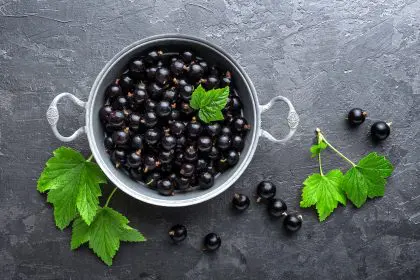When it comes to weight loss, fruit often gets a bad reputation. Some diet trends vilify it for its natural sugar content, while others claim you can only eat it at certain times of day. But nutrition experts are setting the record straight: fruit is actually one of your best allies in reaching your weight loss goals.
The key isn’t avoiding fruit—it’s knowing how to eat it strategically. From timing your apple slices perfectly to choosing the right combinations, these five evidence-based strategies can transform how your body responds to nature’s candy.
1. Time your fruit intake before meals for maximum fullness
The timing of when you eat fruit can make a significant difference in how satisfied you feel throughout the day. Research involving 17 participants revealed that eating an apple 15 minutes before a meal increased feelings of fullness and led to an 18.5% reduction in total consumption during that meal.
This pre-meal strategy works because fruit’s fiber content begins working immediately to slow digestion and signal satiety hormones. When you arrive at your main meal already feeling partially satisfied, you naturally eat smaller portions without feeling deprived.
Try this approach with any whole fruit—whether it’s an apple, pear, or handful of berries. The key is giving yourself that 10-15 minute window between the fruit and your meal to allow the fiber to start working its magic.
2. Create perfect protein and fruit pairings
While fruit alone offers impressive benefits, pairing it with protein creates a nutritional powerhouse that keeps you satisfied for hours. The combination slows sugar absorption even further while providing sustained energy that prevents the afternoon energy crash.
Some winning combinations include apple slices with almond butter, berries mixed into Greek yogurt, or a handful of nuts alongside your favorite seasonal fruit. These pairings work particularly well as afternoon snacks when energy levels typically dip.
The protein component doesn’t need to be elaborate. Even a small piece of cheese with grapes or a hard-boiled egg with orange segments can provide the staying power that fruit alone might not deliver.
3. Choose whole fruits over processed alternatives
When grocery shopping, the produce section should be your first stop, not the dried fruit aisle. Whole, fresh fruits provide maximum benefits because they retain all their natural fiber content and haven’t been concentrated through processing.
Dried fruits, while convenient, pack significantly more sugar and calories into smaller portions. A handful of dried apricots contains the same amount of sugar as several whole apricots, but without the water content that helps you feel full.
Frozen fruits without added sugars make excellent alternatives when fresh options aren’t available or affordable. They retain nearly all their nutritional value and work perfectly in smoothies or as toppings for yogurt and oatmeal.
4. Use portion awareness without strict restriction
Understanding appropriate fruit portions helps you maximize benefits without overdoing natural sugars. Most adults should aim for 1.5 to 2 cups of fruit daily, which translates to about 2-3 servings spread throughout the day.
One serving equals a medium apple, a cup of berries, or a large banana. Rather than measuring obsessively, use visual cues: a serving of fruit should roughly equal the size of a tennis ball or fill about half a cup.
The beauty of whole fruits is that their fiber and water content make it difficult to overconsume them. Your body’s natural satiety signals kick in well before you could eat enough fruit to cause problems.
5. Incorporate fruit strategically throughout your day
Rather than relegating fruit to specific times, think about how different fruits can enhance your meals and snacks throughout the day. Morning berries in your oatmeal provide antioxidants and fiber to start your day strong. Afternoon fruit paired with protein prevents energy crashes and late-day overeating.
Evening fruit consumption won’t sabotage your goals despite popular myths suggesting otherwise. In fact, certain fruits like tart cherries contain natural compounds that may support better sleep quality.
The most successful approach involves consistent daily fruit consumption rather than trying to follow rigid timing rules that are difficult to maintain long-term.
How fruit supports healthy blood sugar levels
Beyond weight management, strategic fruit consumption plays a crucial role in maintaining stable blood sugar levels throughout the day. The fiber in whole fruits slows the absorption of natural sugars, preventing the rapid spikes and crashes associated with processed sweets.
Research involving nearly 80,000 participants found that increasing daily fruit intake by just 100 grams was associated with a 2.8% lower risk of developing type 2 diabetes. This protective effect comes from fruit’s unique combination of fiber, antioxidants, and beneficial plant compounds.
For optimal blood sugar control, consider eating fruit after protein-rich meals. This combination provides the most stable blood sugar response while still allowing you to enjoy fruit’s natural sweetness and nutritional benefits.
Simple ways to boost your daily fruit intake
Most people fall short of recommended fruit consumption, missing out on both weight loss and health benefits. Increasing your intake doesn’t require major dietary overhauls—small, consistent changes make the biggest difference.
Start your day by adding berries to your morning routine, whether in yogurt, oatmeal, or a protein smoothie. Keep pre-cut fruit visible in your refrigerator for easy snacking. Add diced apples or pears to salads for extra fiber and natural sweetness.
Consider fruit as a natural dessert replacement. A bowl of mixed berries with a dollop of Greek yogurt satisfies sweet cravings while providing protein and probiotics that support overall health.
Separating fruit facts from fiction
Despite fruit’s proven benefits, persistent myths continue to influence eating decisions. The idea that people with blood sugar concerns should avoid fruit entirely contradicts scientific evidence showing that whole fruits actually help stabilize glucose levels.
Similarly, the notion that fruit contains “too much sugar” ignores the significant difference between isolated sugars and those naturally packaged with fiber and nutrients. Your body processes fruit’s natural sugars completely differently than added sugars in processed foods.
The myth about eating fruit only on an empty stomach also lacks scientific support. In fact, combining fruit with other foods often enhances both satisfaction and nutritional absorption.
Making fruit work for your lifestyle
The most effective fruit strategy is one you can maintain consistently. Rather than following complicated rules about timing or combinations, focus on including a variety of colorful fruits in your daily routine.
Seasonal eating keeps fruit consumption interesting while often providing the best nutritional value and flavor. Summer berries, fall apples, winter citrus, and spring stone fruits each offer unique benefits and prevent dietary boredom.
Remember that the goal isn’t perfection—it’s progress. Even adding one additional serving of fruit per day can provide measurable health benefits and support your weight management goals.
Success comes from finding sustainable ways to enjoy fruit as part of a balanced approach that also includes adequate protein, healthy fats, and plenty of vegetables. When you stop viewing fruit as something to limit and start seeing it as a valuable tool for health and satisfaction, reaching your goals becomes both easier and more enjoyable.


















